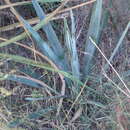en
names in breadcrumbs


According recent articles by AR Frank (2012) and A García-Mendoza & F Chiang (2003) as well as a book by AG Valensuela Zapata & GP Nabhan (2003), it has been established that A. vivipara L. does not have priority over A. angostifolia Haw. and that they are two separate species. Recent biotechnologyliterature(such as Simpson et al, 2011) seems to have accepted them as two separate species.
AG Valensuela Zapata & GP Nabhan (2003) also stated in their book that it has been generally accepted that A. vivipara L. has priority over A. cantala.
Agave angustifolia is a narrow-leaved agave with yellow to green flowers from which many cultivated varieties have been derived (Valenzuela Zapata & Nabhan 2003; Gentry 1982). It provides many products and has been used to provide food and daily use objects since Aztec times (Mohr 1999). Additionally, many traditional medicines can be derived from this plant. The juice of the leaves and stems as well as root infusions and teas can be taken internally or used as poultices for both internal and external swelling, bruises, liver and kidney disease, arthritis and dysentery (Mata Pizón Mata & Zolla 1994b; García-Mendoza & Chiang 2003).
Spines at the ends of leaves have traditionally been used to make pins and needles (Mohr 1999; Mata Pizón & Zolla 1994a). The woody inflorescence stems continue to be used as posts, rafters and fences and leaves are used for thatching or to provide forage, fuel and forage (García-Mendoza & Chiang 2003). A. angustifolia is additionally commercially cultivated in Mexico, the West Indies and Southern Europe and harvested to produces sisal hemp (Franck 2012). Three varieties in particular are cultivated for their fibers: var. deweyana (Trel.) in Tamaulipas and Veracruz, var. letonae (Taylor) in El Salvador and Guatemala, and var. nivea (Trel.) in Guatemala (Gentry 1982).
The flower buds, flowers, stems, leaf bases, peduncles of young flowers and fruits can all be eaten and continue to be eaten as traditional foods in some parts of western Mexico(García-Mendoza & Chiang 2003). The stems are cooked and their juice extracted fermented and distilled to make a variety of alcoholic beverages.Several cultivars have been selected form the same gene-pool of Agave angustfoliafirst for food and then for characteristics that made them favorable for the production of distilled alcoholic beverages such as mezcals which are produced in the Mexican states of Chihuahua, Durrango, Guerrero, Mexico, Nayarit, Oaxaca, Sinaloa and Sonora (García-Mendoza & Chiang 2003). The most economically of these is Agave tequilana, which is differentiated as its own species though many botanists regard this separation to be nominal only (Lopez et al. 2003; Valensuela Zapata & Nabhan 2003; Franck 2012; Garcia-Mendoza & Chiang 2003; Gentry 1982).
More than 20 landraces of Agave angustifolia Haw. are still cultivated in Mexico’s central western region near the south of the state Jalisco in order to produce mescals (Vargas-Ponce et al. 2009). Several varieties are found throughout southeastern Mesoamerica and in the highlands but are facing pressure from the tequila industry which only cultivates blue agave (Miller and Taube 1993; Dalton 2005; Valenzuela 2011).